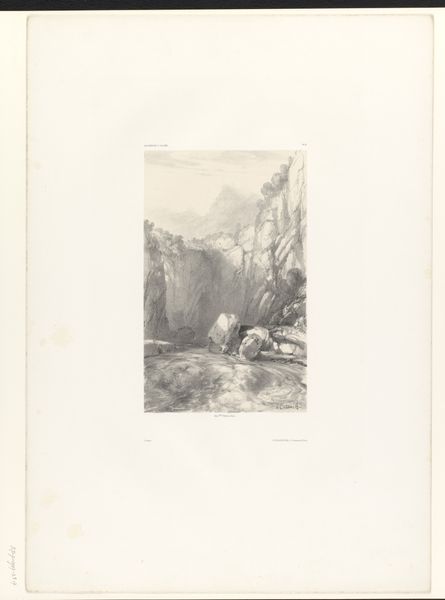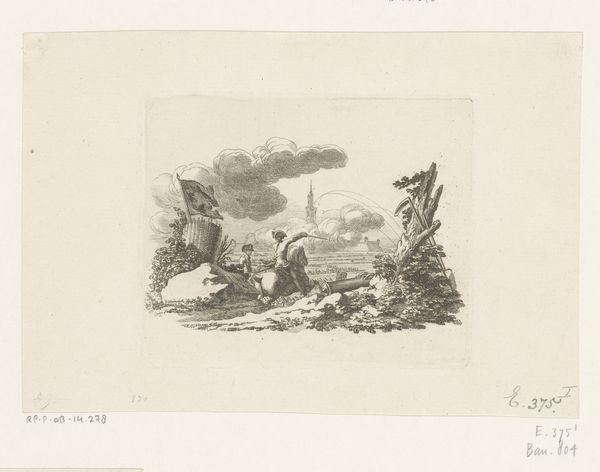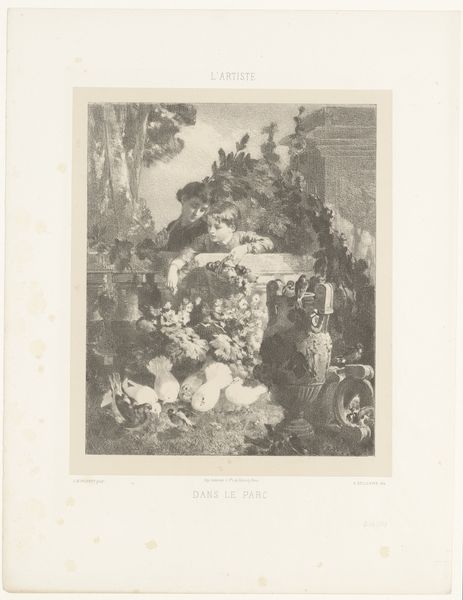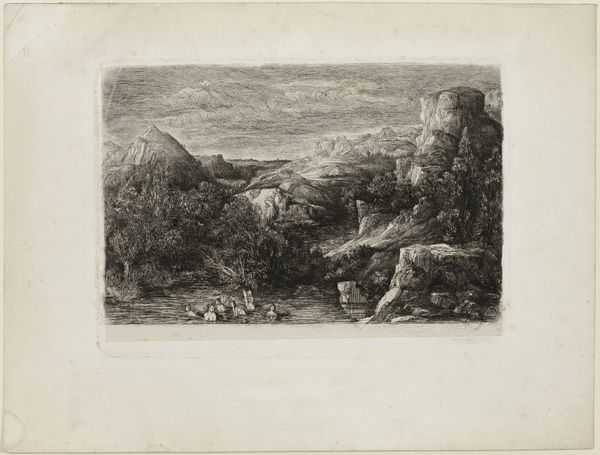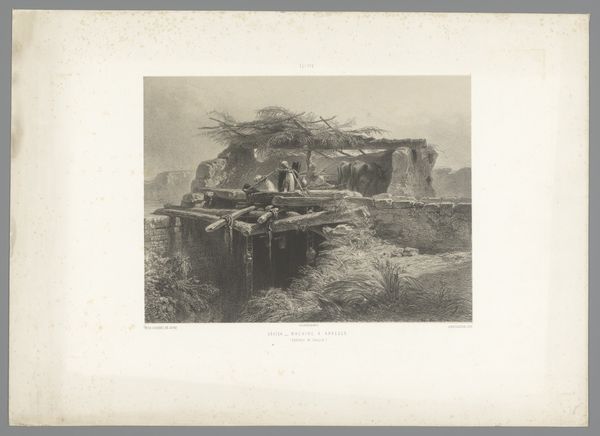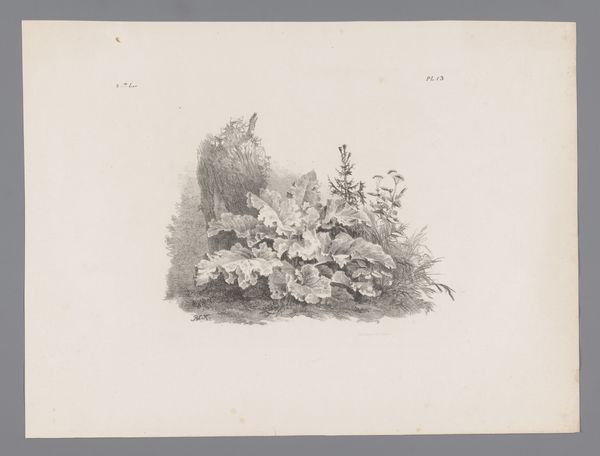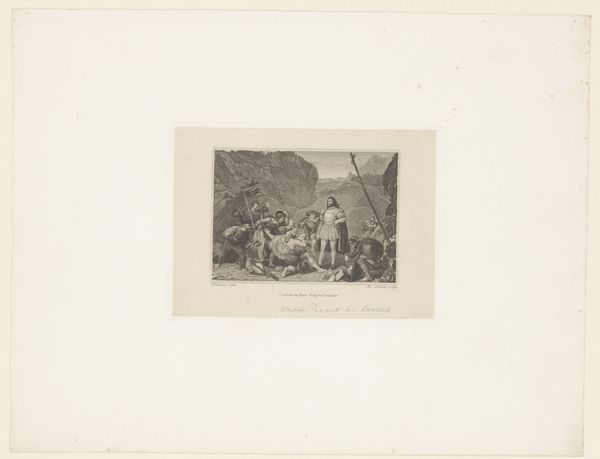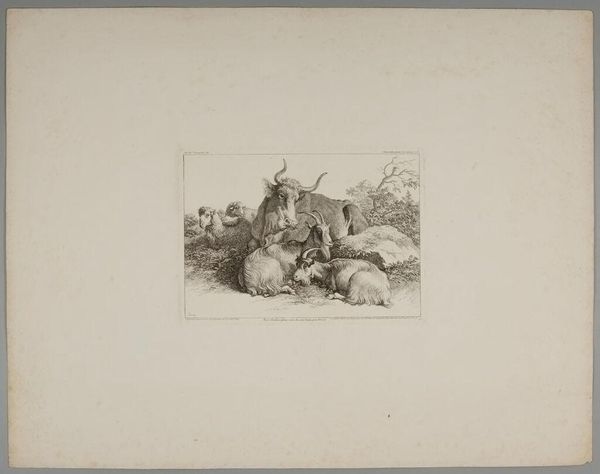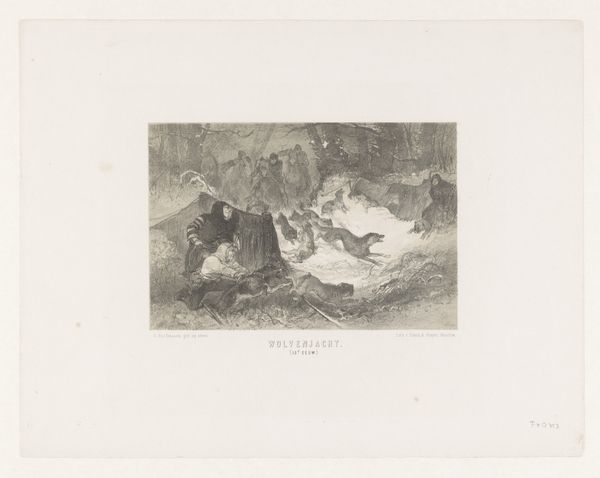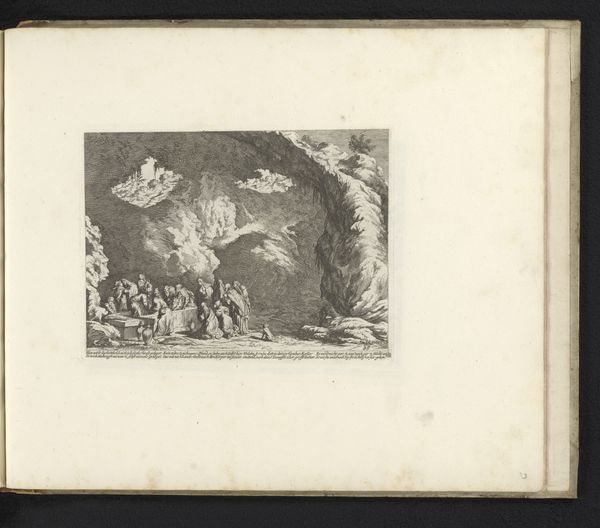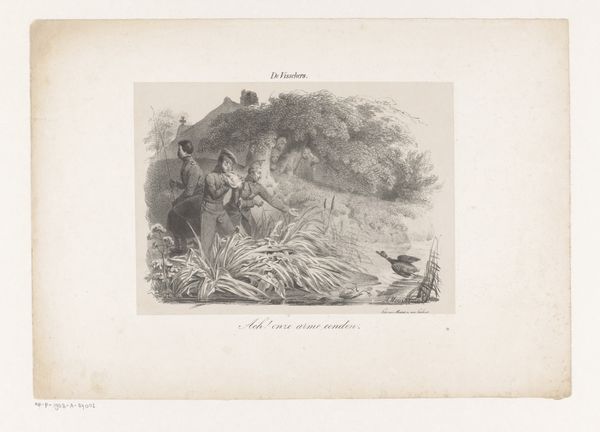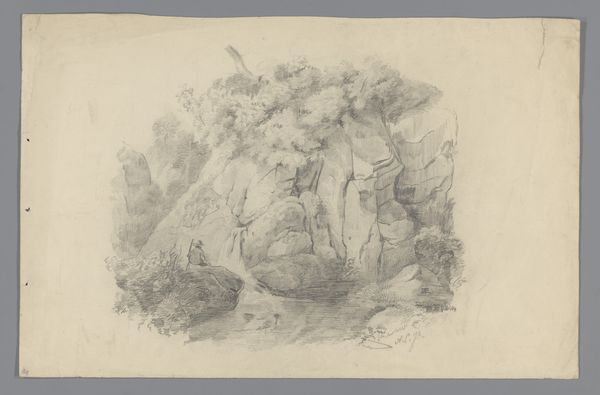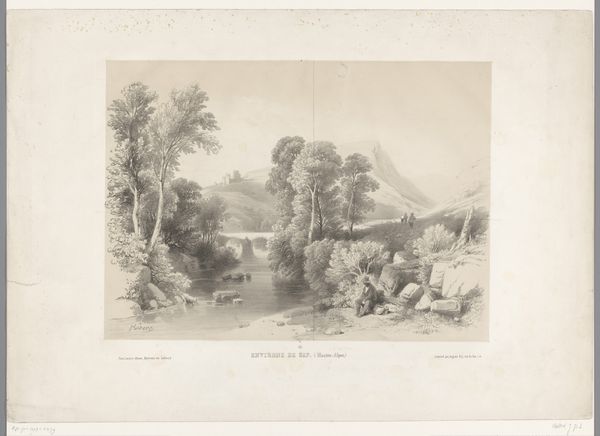
print, engraving
#
narrative-art
# print
#
romanticism
#
cityscape
#
history-painting
#
engraving
Dimensions: height 358 mm, width 550 mm
Copyright: Rijks Museum: Open Domain
Curator: Immediately, this composition feels frenetic. So many figures, all moving—or falling—in such dramatic fashion. What are we looking at? Editor: This engraving by Auguste Raffet, created in 1838, depicts "Arabs Fleeing Constantine, October 13, 1837." It is held in the collection of the Rijksmuseum. Curator: The texture created through the engraving is incredible. See how the dense, almost chaotic lines communicate both the instability of the terrain and the turmoil of the scene? Editor: Raffet’s work belongs to the Romanticism movement, and this particular piece illustrates a moment during the French conquest of Constantine in Algeria. It presents a very specific viewpoint—one that valorizes French colonial exploits. Curator: The formal arrangement reinforces that valorization. Note how the figures in disarray contrast against the solid architecture on the plateau. Editor: Precisely. By depicting the Arab population in panicked flight, Raffet's engraving likely served to reinforce a particular political narrative and helped to cultivate public support for the French colonial enterprise. Consider the choices: light and dark, chaos and order. Each reinforces the message. Curator: I agree that Raffet is manipulating elements of composition to create hierarchy and suggest power, with those stable architectural forms looming distantly above, and those textural variations used to emphasize feelings of agitation and desperation in the foreground figures. Editor: Yes, the artistic decisions reinforce and amplify a specific historical context, providing us with a lens to critically examine the role of art in shaping perceptions of historical events and the complex relationship between power, representation, and cultural narrative. Curator: Examining the formal aspects gives me a strong emotional read on this event; contextual understanding exposes even greater purpose, intent, and depth of consequence behind these simple but compelling arrangements of lines and shapes. Editor: Exactly. It makes you think about the weight of the colonial gaze and the stories that were—and weren't—told.
Comments
No comments
Be the first to comment and join the conversation on the ultimate creative platform.
